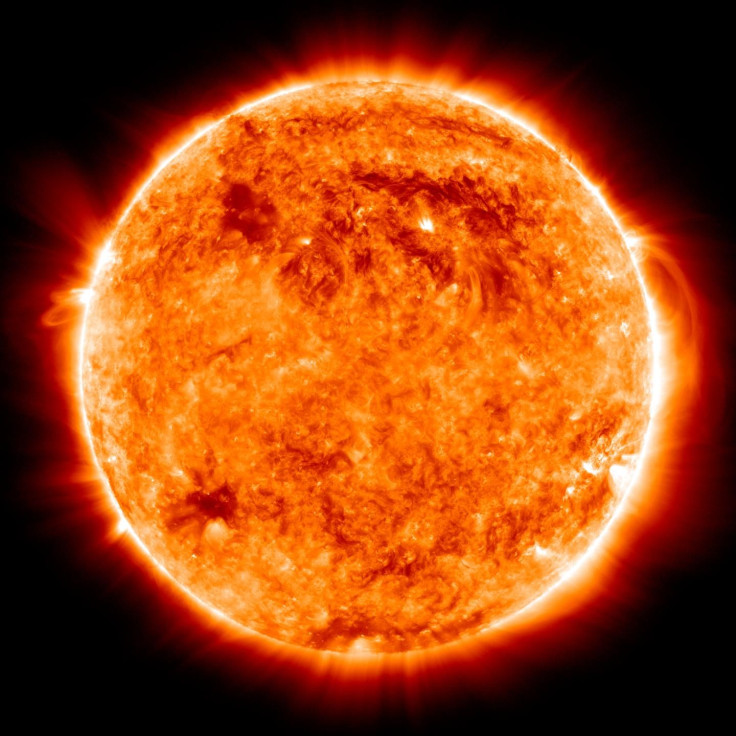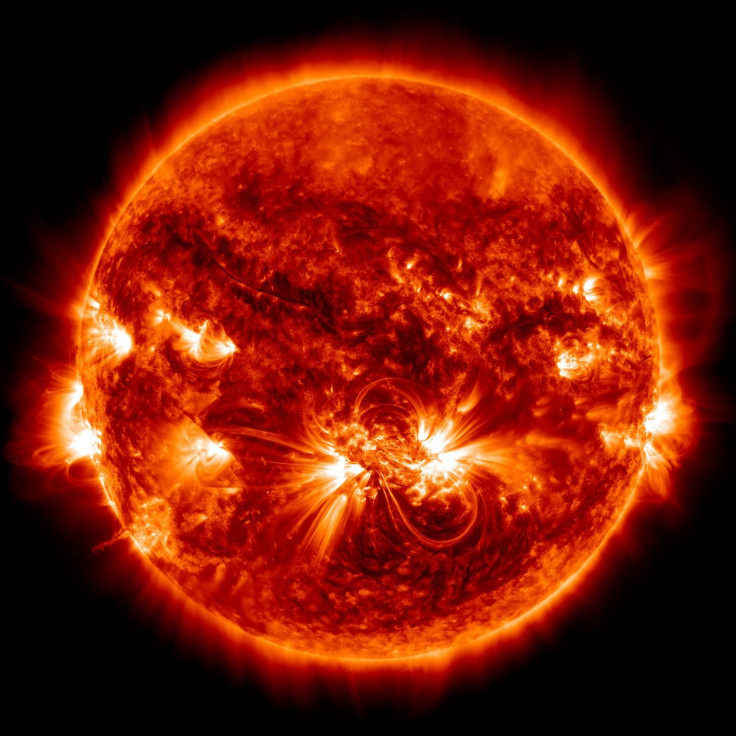Sun’s Corona Temperature, Solar Magnetic Activity Could Be Linked

The light from the sun takes eight minutes to travel to Earth, and it loses a considerable amount of its heat as it traverses the 150 million kilometers (93 million miles) that separate the two bodies. The surface of the sun — the photosphere — itself is a scalding 6000 degrees hot, but if you tried to get to our friendly neighborhood star, even if using a spacecraft that could withstand that temperature, you would burn up the moment you come into contact with the solar atmosphere.
Called the corona, the sun’s atmosphere is several hundred times hotter than its surface, and how the corona reaches its temperature of millions of degrees is one of the great unsolved problems of astrophysics. But research conducted by University College London (UCL), George Mason University (GMU) in Fairfax, Virginia, and the Naval Research Laboratory may have found a significant clue to unraveling some of the mystery.
“Why the sun’s corona is so hot is a long-standing puzzle. It’s as if a flame were coming out of an ice cube. It doesn’t make any sense! Solar astronomers think that the key lies in the magnetic field, but there are still arguments about the details,” David H. Brooks of GMU, who was the lead author of the study, said in a statement issued by UCL on Thursday.
Read: Scientists Reevaluate The Sun’s Surface Speed
Funded by NASA’s Hinode program, the research found the elemental composition of the corona is strongly correlated with the solar magnetic activity, which has an 11-year cycle. When certain elements in the sun’s atmosphere, like iron, are seen to be in higher concentration, the magnetic activity is observed to be higher as well. These findings “could have significant implications for understanding the process leading to the heating of the sun's corona,” the statement said.
“Elemental composition is an important component of the flow of mass and energy into the atmospheres of the Sun and other stars. How that composition changes, if it does indeed change, as material flows from the surface of the Sun to its corona influences ideas we have about the heating and activity in atmospheres of other stars,” Deborah Baker of UCL said in the statement.
Brooks explained some more: “Previously, many astronomers thought that elemental composition in a star’s atmosphere depended on the properties of the star that don’t change, such as the rotation rate or surface gravity. Our results suggest that it may also be linked with the magnetic activity and heating processes in the atmosphere itself, and they change with time, at least in the sun.”
This implies the findings of the research could also be used to better understand how other stars heat up.
Read: The Sun Had A Twin A Long Time Ago
Certain elements, like iron, are preferentially transferred to the corona from the surface, but we don’t know the mechanism behind the phenomenon. However, the researchers think the same mechanism could be closely linked to the movement of energy, and understanding it could reveal the secret behind the corona’s heating.

For the research, the scientists analyzed data gathered from 2010, when the solar magnetic activity was low (solar minimum), to 2014, by which time large magnetic regions moving across the solar disk were commonplace. An entire cycle of solar magnetic activity has still not been studied.
“The fact that we detected this variation of the Sun in a relatively small period of time really highlights the importance of observing stars over complete stellar cycles, which we hope to do in the future. Currently, we tend to just have snapshots of stars, but these are potentially missing some important clues,” Baker said in the statement.
The study, titled “A Solar cycle correlation of coronal element abundances in Sun-as-a-star observations,” appeared online Thursday in the journal Nature Communications.
© Copyright IBTimes 2024. All rights reserved.





















